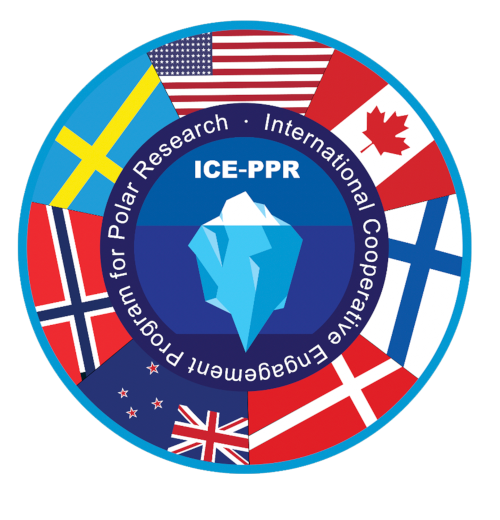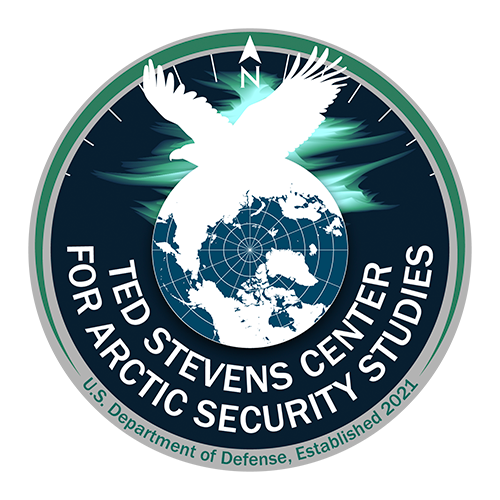ICE-PPR U.S. SAWG
What is ICE-PPR?
The International Cooperative Engagement Program for Polar Research (ICE-PPR), International Cooperative Engagement Program for Polar Research (ICE-PPR) | Office of Naval Research (navy.mil), is an agreement between seven partner nations’ defense departments and government agencies engaged in polar research to help advance polar science and technology.
Who is Involved in ICE-PPR?
Nations that signed this Memorandum of Understanding (MOU) include the U.S., Canada, Denmark, Finland, New Zealand, Norway, and Sweden. U.S. ICE-PPR involvement is coordinated by the Office of Naval Research. Participation is open to members of the Joint community, all service branches, service research facilities, Federally Funded Research and Development Centers (FFRDC), U.S. government agencies, academia including University Affiliated Research Centers (UARC), and industry.
Why does Ted Stevens Center for Arctic Security Studies support ICE-PPR?
Fostering cooperation in research leverages relationships with Arctic Allies to advance knowledge in the region through cost sharing. The Ted Stevens Center for Arctic Security studies has the authority to conduct research with a remit spanning geostrategic to geophysical aspects. Through ICE-PPR, TSC can foster research beyond the capacity of its own staff and help the Department get more from each research dollar.
Leadership of the ICE-PPR Situational Awareness Working Group:
The TSC Director is appointed by the Chief of Naval Research as the U.S. Principle to the Situational Awareness Working Group (SAWG). Director Kee is further appointed by the ICE-PPR ESC as the International Chair of the SAWG.
How Does ICE-PPR Work?
ICE-PPR operates according to an overarching framework agreement or MOU, led by an Executive Steering Council and Working Groups using Terms of Reference. There are Working Groups are for environment, human performance, platforms, and situational awareness. Regular meetings of Working Groups and Sub-Working Groups enable international research connections, permit the exchange of RDT&E information, identify areas of cooperation, and potentially lead to Project Arrangements (PAs).
While the ESC’s priority for ICE-PPR is the exchange of information, PAs may grow out of these fora and represent the full maturation of a research relationship. PA’s under the ICE-PPR MOU involve at least two of the nations and may entail Cooperative Project Personnel (CPP), Equipment & Materiel Transfer Agreements (E&MTA), or opportunities for Experimentation, Demonstration, Exercises (EDE). This effort seeks to enable easier transition of basic research to more applied research carried out by governments, academia, industry partners.
How can my organization participate in ICE-PPR SAWG?
Meeting invitations, presentations, and workshop opportunities are distributed to our SAWG mailing list. To start the conversation today, please contact tsc.arctic.publicaffairs@groups.af.mil

USSAWG Meeting Agendas
 June 2022 – June 23, 2022
June 2022 – June 23, 2022 February 2022 – February 23, 2022
February 2022 – February 23, 2022 November 2021 – November 02, 2021
November 2021 – November 02, 2021 August 2021 – August 31, 2021
August 2021 – August 31, 2021 April 2021 – April 20, 2021
April 2021 – April 20, 2021 March 2021 – March 22, 2021
March 2021 – March 22, 2021 January 2021 – January 19, 2021
January 2021 – January 19, 2021 December 2020 – December 07, 2020
December 2020 – December 07, 2020 October 2020 – October 02, 2020
October 2020 – October 02, 2020 Teleconference notes from 31 July 2020 meeting – Virtual Update August 27, 2020
Teleconference notes from 31 July 2020 meeting – Virtual Update August 27, 2020
ICE-PPR Executive Meeting Information
 July 2021, USA XO Update – July 15, 2021
July 2021, USA XO Update – July 15, 2021 June 2021, USA XO Update – June 21, 2021
June 2021, USA XO Update – June 21, 2021 April 2021, MS Teams Information – April 20, 2021
April 2021, MS Teams Information – April 20, 2021 January 2021, ICE-PPR XO Update – January 19, 2021
January 2021, ICE-PPR XO Update – January 19, 2021 September 2020, Current Overview – September 17, 2020
September 2020, Current Overview – September 17, 2020 September 2020, Executive Steering Committee (ESC), Virtual Update – September 24, 2020
September 2020, Executive Steering Committee (ESC), Virtual Update – September 24, 2020 September 2020, Opening Remarks, U.S. Executive – September 20, 2020
September 2020, Opening Remarks, U.S. Executive – September 20, 2020 September 2020, Opening Remarks, ICE-PPR Biographies – September 20, 2020
September 2020, Opening Remarks, ICE-PPR Biographies – September 20, 2020 May 2020 National Update, Environmental WG – May 04, 2020
May 2020 National Update, Environmental WG – May 04, 2020 April 2020 Overview – April 23, 2020
April 2020 Overview – April 23, 2020
CE-PPR USSAWG Briefings
 ICE-PPR Situational Awareness Working Group Teleconference – September 22, 2022
ICE-PPR Situational Awareness Working Group Teleconference – September 22, 2022 NONOK – Nautical Navigations Operational Knowledge, By: Mikkel Høegh Bojesen, April 20, 2021
NONOK – Nautical Navigations Operational Knowledge, By: Mikkel Høegh Bojesen, April 20, 2021 Integrated Remote Sensing for the Arctic (IRSA), By: Paul Curlett, April 20, 2021
Integrated Remote Sensing for the Arctic (IRSA), By: Paul Curlett, April 20, 2021 USA XO Update – April 20, 2021
USA XO Update – April 20, 2021 ORION, Medium-Altitude Long-Endurance Unmanned Aircraft, By: Aurora Flight Sciences – April 20, 2021
ORION, Medium-Altitude Long-Endurance Unmanned Aircraft, By: Aurora Flight Sciences – April 20, 2021 ODYSSEUS, High-Altitude Ultra Long Endurance Aircraft, By: Aurora Flight Sciences – April 20, 2021
ODYSSEUS, High-Altitude Ultra Long Endurance Aircraft, By: Aurora Flight Sciences – April 20, 2021 CENTAUR, Optionally-Piloted Aircraft System, By: Aurora Flight Sciences – April 20, 2021
CENTAUR, Optionally-Piloted Aircraft System, By: Aurora Flight Sciences – April 20, 2021 Aurora Flight Sciences Overview, By: Aurora Flight Sciences – April 20, 2021
Aurora Flight Sciences Overview, By: Aurora Flight Sciences – April 20, 2021 Situational Awareness Working Group (SAWG) – November 27, 2020
Situational Awareness Working Group (SAWG) – November 27, 2020 HAWKEYE 360, RF FOR Arctic Domain Awareness – April 22, 2021
HAWKEYE 360, RF FOR Arctic Domain Awareness – April 22, 2021 eLoran Next Generation Trial Program, Western United States – March 22, 2021
eLoran Next Generation Trial Program, Western United States – March 22, 2021 U.S. National Ice Center – February 22, 2021
U.S. National Ice Center – February 22, 2021 Mini-Secure Communications Controller, By: Trident Systems Incorporated – January 2021
Mini-Secure Communications Controller, By: Trident Systems Incorporated – January 2021 ICE-PPR SAWG – Dr. Phil McGillivary, By: Dr. Phil McGillivary – January 19, 2021
ICE-PPR SAWG – Dr. Phil McGillivary, By: Dr. Phil McGillivary – January 19, 2021 Mini Secure Communications Controller v1.1, By: Trident Systems Incorporated – 2021
Mini Secure Communications Controller v1.1, By: Trident Systems Incorporated – 2021 Situational Awareness Working Group (SAWG) – May 22, 2020
Situational Awareness Working Group (SAWG) – May 22, 2020 Situational Awareness Working Group (SAWG), Working Meeting – July 31, 2020
Situational Awareness Working Group (SAWG), Working Meeting – July 31, 2020 U.S. Situational Awareness Working Group (USSAWG) – November 17, 2020
U.S. Situational Awareness Working Group (USSAWG) – November 17, 2020 Arctic, Baltic, Barents, and Atlantic Mission Network Overview, US Perspective – Condensed Brief – January 16, 2019
Arctic, Baltic, Barents, and Atlantic Mission Network Overview, US Perspective – Condensed Brief – January 16, 2019 eLORAN – Global, Resilient, & Co-Primary PNT to Protect Against GPS/GNSS Disruptions
eLORAN – Global, Resilient, & Co-Primary PNT to Protect Against GPS/GNSS Disruptions Naval Information Warfare Center Pacific Command Overview, By: Paul R. Shirley – 2019
Naval Information Warfare Center Pacific Command Overview, By: Paul R. Shirley – 2019 NAVWAR ICO brief 2020, International Cooperation Office
NAVWAR ICO brief 2020, International Cooperation Office CCDC GLOBAL POSTURE
CCDC GLOBAL POSTURE ICE-PPR Situational Awareness Working Group, Polar Maritime Technology Update, By: Dr. Phil McGillivary – November 06, 2020
ICE-PPR Situational Awareness Working Group, Polar Maritime Technology Update, By: Dr. Phil McGillivary – November 06, 2020
Supplemental Information
 Field Test Results of GNSS-denied Inertial Navigation, By: Kristoffer Gryte, Torleiv H. Bryne, Sigurd M. Albrektsen, Tor A. Johansen – 2019
Field Test Results of GNSS-denied Inertial Navigation, By: Kristoffer Gryte, Torleiv H. Bryne, Sigurd M. Albrektsen, Tor A. Johansen – 2019 Gravity Waves Leave Ripples Across a Glowing Night Sky, A thunderstorm made waves on a rare “bright night” – November 18, 2020
Gravity Waves Leave Ripples Across a Glowing Night Sky, A thunderstorm made waves on a rare “bright night” – November 18, 2020 JGR Atmospheres, Volume 125 – Issue 21 – November 16, 2020
JGR Atmospheres, Volume 125 – Issue 21 – November 16, 2020 An Extraordinary Winter in the Polar North, By: Kate Wheeling – November 20, 2020
An Extraordinary Winter in the Polar North, By: Kate Wheeling – November 20, 2020
Administrative Information
 ICE-PPR MOU – November 27, 2020
ICE-PPR MOU – November 27, 2020 Office of Naval Research – ICE-PPR – 2021
Office of Naval Research – ICE-PPR – 2021 Working Group Expectations – April 17, 2020
Working Group Expectations – April 17, 2020 Administrative Arrangements, Working Group Meetings Virtual Connection Guidance – May 01, 2020
Administrative Arrangements, Working Group Meetings Virtual Connection Guidance – May 01, 2020 Letter of Appointment, Randy “Church” Kee, By: David J. Hahn – May 01, 2020
Letter of Appointment, Randy “Church” Kee, By: David J. Hahn – May 01, 2020 U.S. Situational Awareness Working Group (USSAWG) for International Collaborative Engagement Program for Polar Research (ICE-PPR), By: David J. Hahn – January 09, 2021
U.S. Situational Awareness Working Group (USSAWG) for International Collaborative Engagement Program for Polar Research (ICE-PPR), By: David J. Hahn – January 09, 2021

